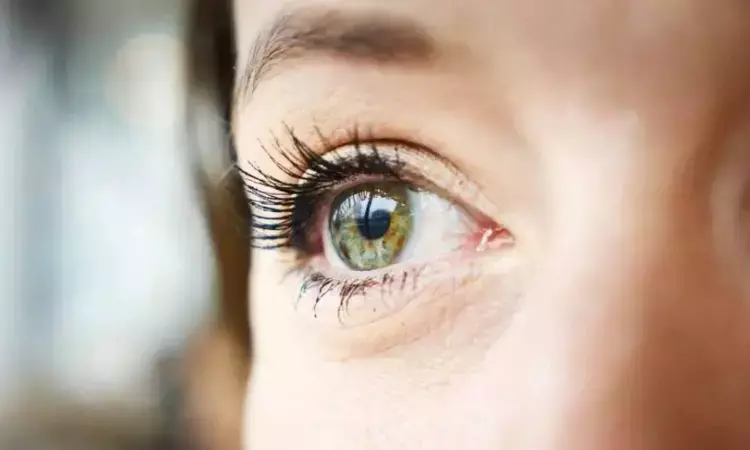- Home
- Medical news & Guidelines
- Anesthesiology
- Cardiology and CTVS
- Critical Care
- Dentistry
- Dermatology
- Diabetes and Endocrinology
- ENT
- Gastroenterology
- Medicine
- Nephrology
- Neurology
- Obstretics-Gynaecology
- Oncology
- Ophthalmology
- Orthopaedics
- Pediatrics-Neonatology
- Psychiatry
- Pulmonology
- Radiology
- Surgery
- Urology
- Laboratory Medicine
- Diet
- Nursing
- Paramedical
- Physiotherapy
- Health news
- Fact Check
- Bone Health Fact Check
- Brain Health Fact Check
- Cancer Related Fact Check
- Child Care Fact Check
- Dental and oral health fact check
- Diabetes and metabolic health fact check
- Diet and Nutrition Fact Check
- Eye and ENT Care Fact Check
- Fitness fact check
- Gut health fact check
- Heart health fact check
- Kidney health fact check
- Medical education fact check
- Men's health fact check
- Respiratory fact check
- Skin and hair care fact check
- Vaccine and Immunization fact check
- Women's health fact check
- AYUSH
- State News
- Andaman and Nicobar Islands
- Andhra Pradesh
- Arunachal Pradesh
- Assam
- Bihar
- Chandigarh
- Chattisgarh
- Dadra and Nagar Haveli
- Daman and Diu
- Delhi
- Goa
- Gujarat
- Haryana
- Himachal Pradesh
- Jammu & Kashmir
- Jharkhand
- Karnataka
- Kerala
- Ladakh
- Lakshadweep
- Madhya Pradesh
- Maharashtra
- Manipur
- Meghalaya
- Mizoram
- Nagaland
- Odisha
- Puducherry
- Punjab
- Rajasthan
- Sikkim
- Tamil Nadu
- Telangana
- Tripura
- Uttar Pradesh
- Uttrakhand
- West Bengal
- Medical Education
- Industry
Concurrent ocular and facial treatments for demodicosis improve outcomes

A recent study published in the American Journal of Ophthalmology unveiled a significant link between ocular and facial demodicosis, shedding light on more effective treatment methods. The study by Wei-Lun Huang and team aimed to investigate the association between these two conditions and assess the impact of facial treatment on ocular demodicosis.
Between April and December 2020, 89 outpatients suffering from ocular demodicosis were enrolled in the study. Diagnosis relied on the epilation of four eyelashes from each upper eyelid, with a high ocular Demodex load (ODL) defined as eight or more mites per eye. Facial infestation was evaluated through direct microscopic examination, identifying facial Demodex overgrowth (FDO) as a density exceeding five mites per square centimeter. All patients were prescribed a three-month ocular treatment, and FDO patients received dermatologic care.
The results, based on patients who completed the treatment regimen, are eye-opening. Patients with low ODL had lower cylindrical sleeve counts compared to those with high ODL (8 vs. 14, P = 0.009). Notably, the prevalence of FDO was significantly lower in this group (49% vs. 77%, P = 0.012).
Moreover, the Ocular Surface Disease Index score showed marked improvement in patients without FDO, decreasing from 20.0 ± 17.1 to 14.0 ± 16.6 after three months of topical tea tree oil treatment (P = 0.027). Additionally, topical ivermectin treatment on facial skin exhibited a remarkable ocular Demodex eradication rate in FDO patients, with a striking 76% success rate compared to only 16% for those without this dermatological intervention (P < 0.001).
The findings suggest a close connection between ocular and facial demodicosis, particularly in cases of severe ocular demodicosis. While ocular treatment alone proves effective for patients solely suffering from ocular demodicosis, the introduction of topical ivermectin treatment on facial skin substantially enhances ocular Demodex eradication in patients concurrently battling facial Demodex overgrowth.
These results offer new hope and a more effective treatment path for demodicosis patients. Further research may build upon this foundation, potentially transforming the way medical professionals approach and manage these related conditions.
Source:
Huang, W.-L., Huang, C.-M., Chu, C.-Y., & Hu, F.-R. (2023). Comorbidity of Ocular and Facial Demodicosis. In American Journal of Ophthalmology. Elsevier BV. https://doi.org/10.1016/j.ajo.2023.09.010
Neuroscience Masters graduate
Jacinthlyn Sylvia, a Neuroscience Master's graduate from Chennai has worked extensively in deciphering the neurobiology of cognition and motor control in aging. She also has spread-out exposure to Neurosurgery from her Bachelor’s. She is currently involved in active Neuro-Oncology research. She is an upcoming neuroscientist with a fiery passion for writing. Her news cover at Medical Dialogues feature recent discoveries and updates from the healthcare and biomedical research fields. She can be reached at editorial@medicaldialogues.in
Dr Kamal Kant Kohli-MBBS, DTCD- a chest specialist with more than 30 years of practice and a flair for writing clinical articles, Dr Kamal Kant Kohli joined Medical Dialogues as a Chief Editor of Medical News. Besides writing articles, as an editor, he proofreads and verifies all the medical content published on Medical Dialogues including those coming from journals, studies,medical conferences,guidelines etc. Email: drkohli@medicaldialogues.in. Contact no. 011-43720751


